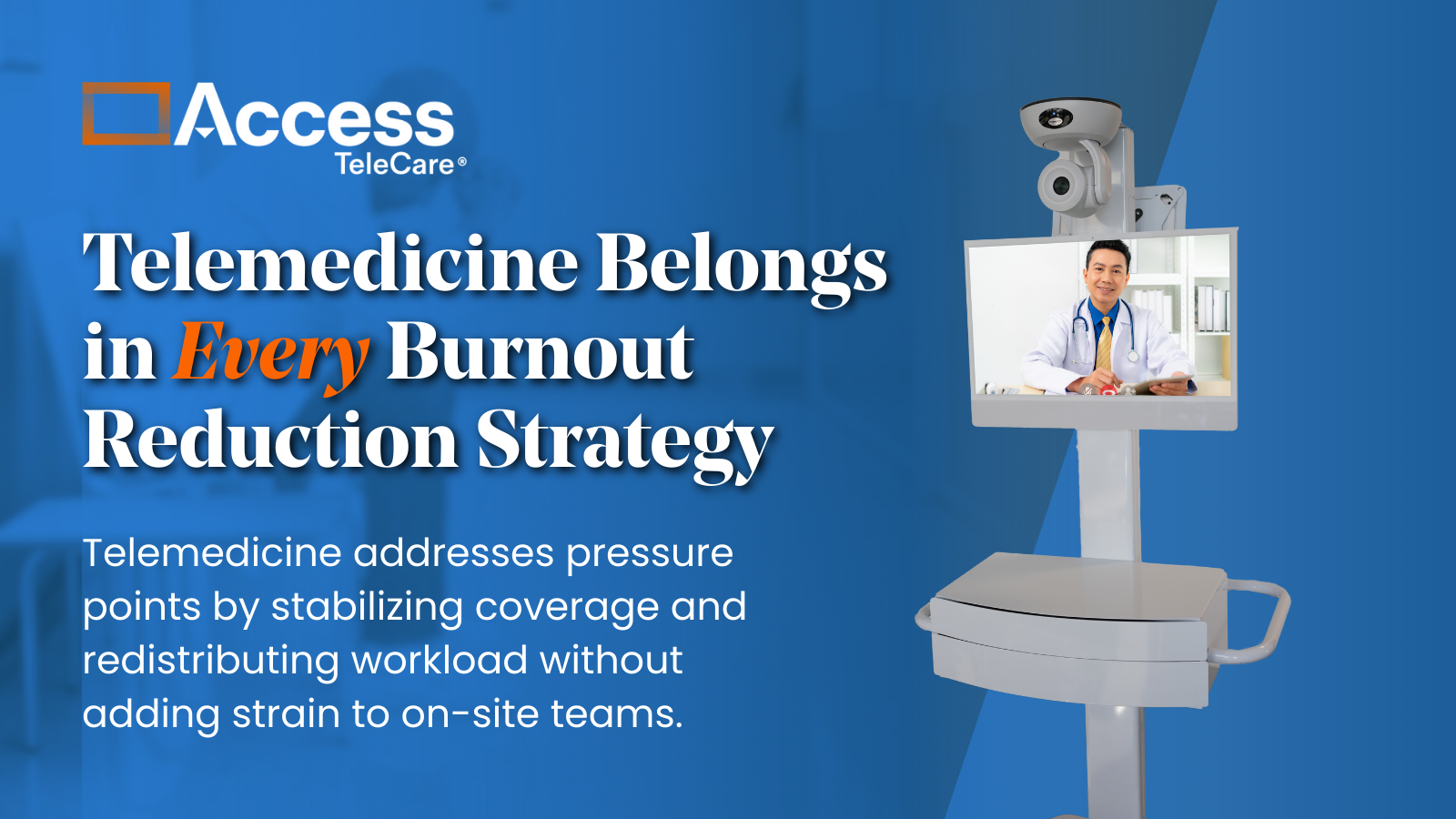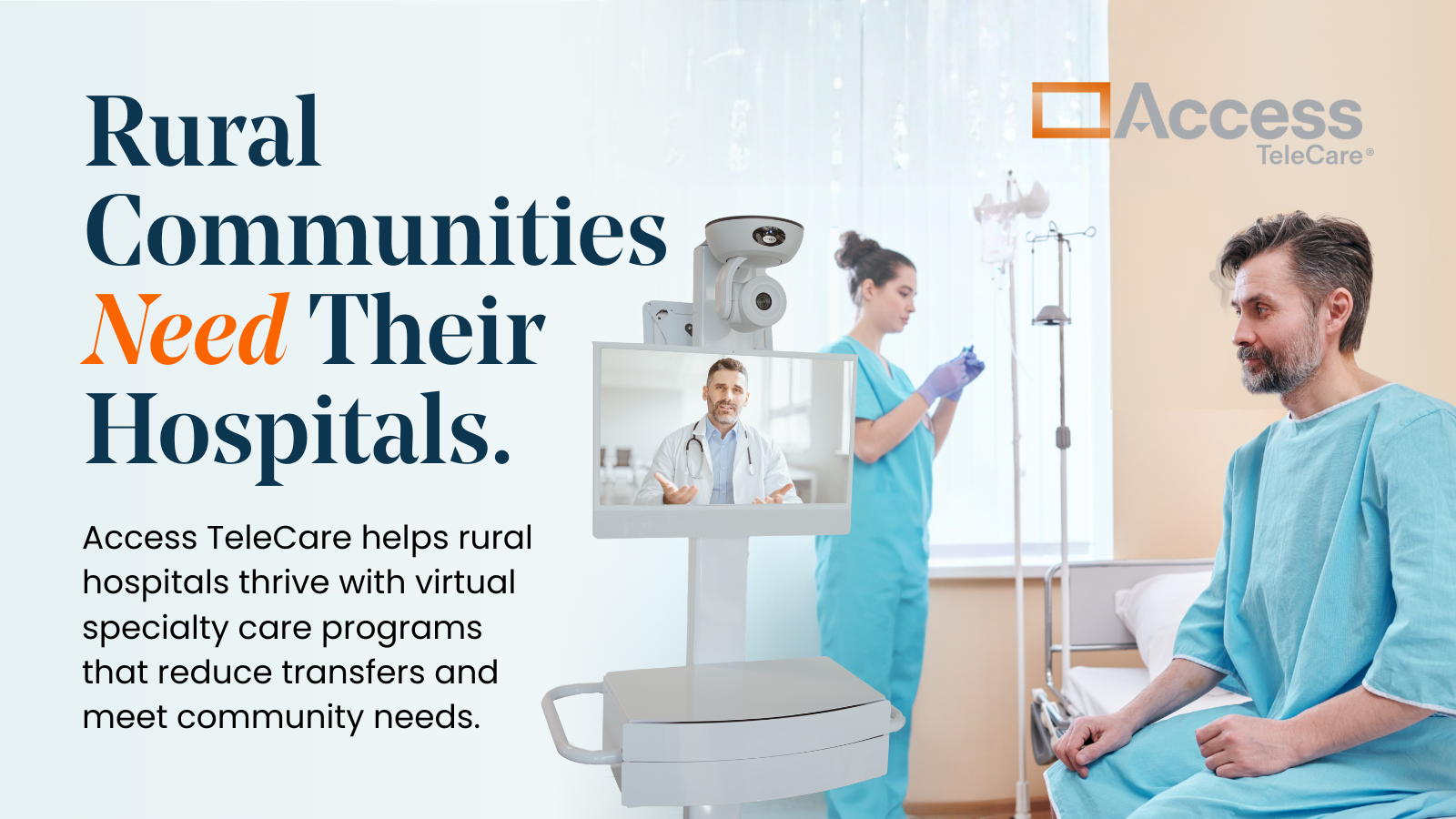Addressing Specialist Availability Challenges with Telemedicine
From Maine to California, more than 100 rural hospitals have completely closed their doors since 2005, as providers face a common set of specialist availability and financial challenges – challenges that telemedicine can solve.
Piggott Health System: A Regional Leader in Specialty Care
In rural Arkansas, Piggott Health System persevered despite the trend and established themselves as a regional leader in specialty care. By deploying Access TeleCare’s telemedicine programs, their team increased clinical capacity and expanded services, reducing transfers and caring for more patients locally. The results have been overwhelmingly positive for the small-town community, which relies on the critical access hospital to provide high quality, local specialty care without transferring patients hundreds of miles away to larger facilities in Little Rock or Memphis.
“Before telemedicine, if a patient was having difficulty breathing or was septic your mind was almost made up that they would need to be transferred. With telemedicine we have the resources available to care for our patients at the most critical time,” said Brittnay Mossman, APRN, hospitalist at Piggott Health System.
Telemedicine Success at Sullivan County Community Hospital
Another critical access hospital in Indiana has enjoyed similar community-wide benefits from partnering with Access TeleCare. In a state that has seen multiple rural hospitals close in just the last few years, Sullivan County Community Hospital leveraged telemedicine to quickly right the ship and provide sorely needed capacity for its on-site providers. The hospital’s providers were overstretched caring for patients at both the hospital and surrounding clinics, but Access TeleCare’s telemedicine programs changed all of that, and quickly.
“The integrated nature of these programs helps us start delivering needed care for patients right away,” said Lori Resler, CNO, Sullivan County Community Hospital. “Their hospitalists rapidly update patient cases with clear and concise notes in our EMR, making critical information available to on-site staff in real-time.”
Within a few days of deploying a teleHospitalist program, the hospital’s on-site providers knew there was no going back to providing care without telemedicine. The added capacity and timely access to experienced and collaborative care experts enhanced the breadth and level of care the hospital could provide, garnering full support from on-site staff as well as the community. “The collaboration with our in-person caregivers is felt by our patients, who embraced telemedicine just as quickly as our staff did,” noted the hospital’s CEO, Michelle Franklin.
Expanding Services Through Telemedicine at Palo Pinto General Hospital
Texas has seen more rural hospitals close in recent years than any other state, with 14 facilities closing completely and another 11 no longer providing inpatient care. Despite this challenging environment, Palo Pinto General Hospital has moved beyond merely surviving by actually expanding and adding new specialty care services through telemedicine. The hospital partners with Access TeleCare to provide 24/7 specialist coverage for neurology, pulmonary and critical care, infectious disease, and endocrinology services, and has seen significant reductions in outbound transfers and received positive feedback from its patients.
“With the Access TeleCare partnership, we can keep more patients closer to home and improve access to care,” said Palo Pinto’s CEO Ross Korkmas. “It’s leveraging technology to improve patient care [and] get our physicians and our patients access to specialists they may not have otherwise had access to.”
Contact us to learn more about our telemedicine programs and how Access TeleCare is changing rural care in communities across the country.









